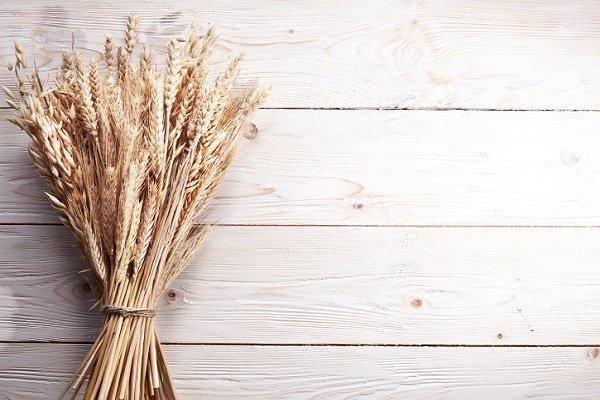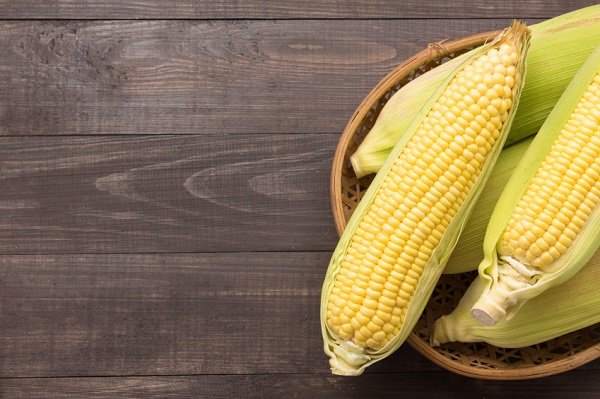A lot of people grow fruits and vegetables in their backyards, but for some reason, most of those gardeners think that growing their own grains would be too difficult and stick to purchasing grains from the local grocery store.

When we think of grains like wheat, oats, barley, or rye, we usually picture large farms with fields and fields of tall, flowing plants. Although growing grains in your own backyard takes a bit of specialized knowledge, it’s actually not as difficult as you might think.
For starters, you don’t need any special machinery or even a lot of space. In fact, a little bit of garden space, even a spot as small as a single row in your vegetable garden, will do. With just a little bit of research, you will be able to grow these grains in your own backyard.
Growing grains is simple. First, you have to work the soil into a seedbed and broadcast the seed by hand. Then you have to rake the soil to work the seed into the ground about 2 inches deep. Next, spread a 2-inch or 4-inch layer of loose straw over top to help keep in moisture and keep out weeds.
And that’s basically it for starting, but every type of grain is different in when you plant it and when you harvest it. Here are eight types of grains that you can grow in your own garden with just a little bit of research and effort.
1. Wheat

There are several varieties of wheat; you can either choose a winter or spring variety. The hard red wheat varieties are most commonly used for baking and can grow in both cool and warm seasons. Hard red winter and hard red spring wheats are used for baking bread; soft red winter and white wheat are usually used for pastry flour.
Winter wheat is planted in fall, stays green throughout the early winter, and can be harvest in the spring. The quick warm weather helps speed up the new growth. If you decide to go with a spring variety, plant it at the beginning of the growing season and harvest in the late summer.
2. Barley

Barley is a delicious grain commonly cooked in soups, pilafs, and casseroles. It can also be made into flour and is low in gluten.
Home processing is difficult because of barley’s tough hull that needs to be removed. However, you can plant barley in either early spring for a late spring harvest, or in the fall for a spring harvest.
3. Corn

Growing corn in your garden is easy, but it does take a long time to grow. Usually when gardeners think about growing corn, they consider growing sweet corn, the kind you would eat cooked as corn on the cob. But if you want to grind it up into corn meal or flour, you will have to grow dry corn.
Dry corn is grown the exact same way as sweet corn, but they cannot grow near each other or they will cross-pollinate. Corn needs a long, hot growing season and rich soil to grow.
4. Oats

Oats are considered a superfood; they are high in protein and low in carbohydrates. Oats often have a tough hull that is difficult to remove, but you can find hull-less varieties to grow such as “Freedom.”
If you live in the South, it’s best to plant oats in the fall for a spring harvest, but in cold climates, oats should be planted in early spring for a summer harvest. They need a lot of moisture and prefer a cool climate and fertile, well-drained soil.
5. Buckwheat

Although buckwheat isn’t actually a cereal grain, but instead a member of the Polygonaceae family among rhubarb and garden sorrel, it is a tasty grain often added to bread.
Buckwheat can be planted any time from spring to late summer and only takes about 75 days to grow. It can also grow well in poor soil.
6. Rye

Rye grows better than wheat in cold, wet climates and can grow well in poor soil. Otherwise, you can plant rye in the same manner and rate as winter wheat in either late summer or late fall.
7. Millet

Millet is a common name for at least five different genera and species of cereal grains in Asia and Africa. However, we usually refer to millet as the small, shiny, yellow seeds in birdseed mixes. It is high in essential amino acids and has a subtle nutty flavor when cooked.
Millet matures in as few as 30 days, and you can plant it at any time in the spring or summer. It can also tolerate growing in poor soils.
8. Spelt

This grain is also similar to wheat. It has a nutty flavor and are highly nutritious seeds that are easily digested. Spelt is used to make breads, flour. and pasta. It contains a different gluten than wheat does and many people who are allergic to wheat can tolerate spelt.
Spelt can grow well in poorer soil than wheat, even in heavy clay or dry conditions. It should be planted in the fall and harvested in the spring.



One Reply to “8 Grains You Can Grow in Your Own Garden”